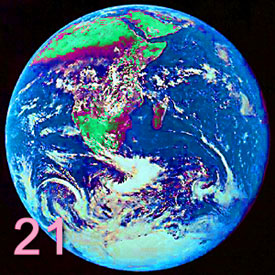Film, Radio and TV - 19 ~ Additional Information |
Shortwave Bands
Although a dozen or so bands are included in shortwave, in terms of distant reception the following are considered among the best.
A Standard World Time International shortwave broadcasters have their program listings on their web sites. Program times are given in Coordinated Universal Time (UTC), also known as Greenwich Mean Time (GMT), World Time, and Zulu Time. UTC is the time in Greenwich England, uncorrected for daylight saving time. It is stated in the 24-hour format. UTC can be heard each minute on station WWV in Fort Collins, Colorado on 2,0000MHz, 15000Hkz, 50000MHz and 2500Khz. This service, which is accurate to within a small fraction of a second, is used as a world standard for timekeeping. You can almost always get at least one of these frequencies on short wave during the day or night. Some watches and consumer clocks now use these signals as a time references. UTC can also be heard at night on CHU, a Canadian station at 7335Khz. UCT times can readily be translated into your local time. For example, if you live on the West Coast of North America, and the UTC or GMT is 20:00 hours, the time will be 12-noon Pacific Standard Time (or 11am during daylight savings time). World maps typically list time zones for various countries or world regions in plus or minus hours from UTC or GMT.
When trying to listen to shortwave remember that the materials used in some larger buildings tend to screen out radio signals—especially if there are floors above you. Putting the radio near a window or using an outside antenna may help. If this still doesn't do the job, the VOA website has instructions for boosting your radio's reception capabilities with readily-available materials.
|
